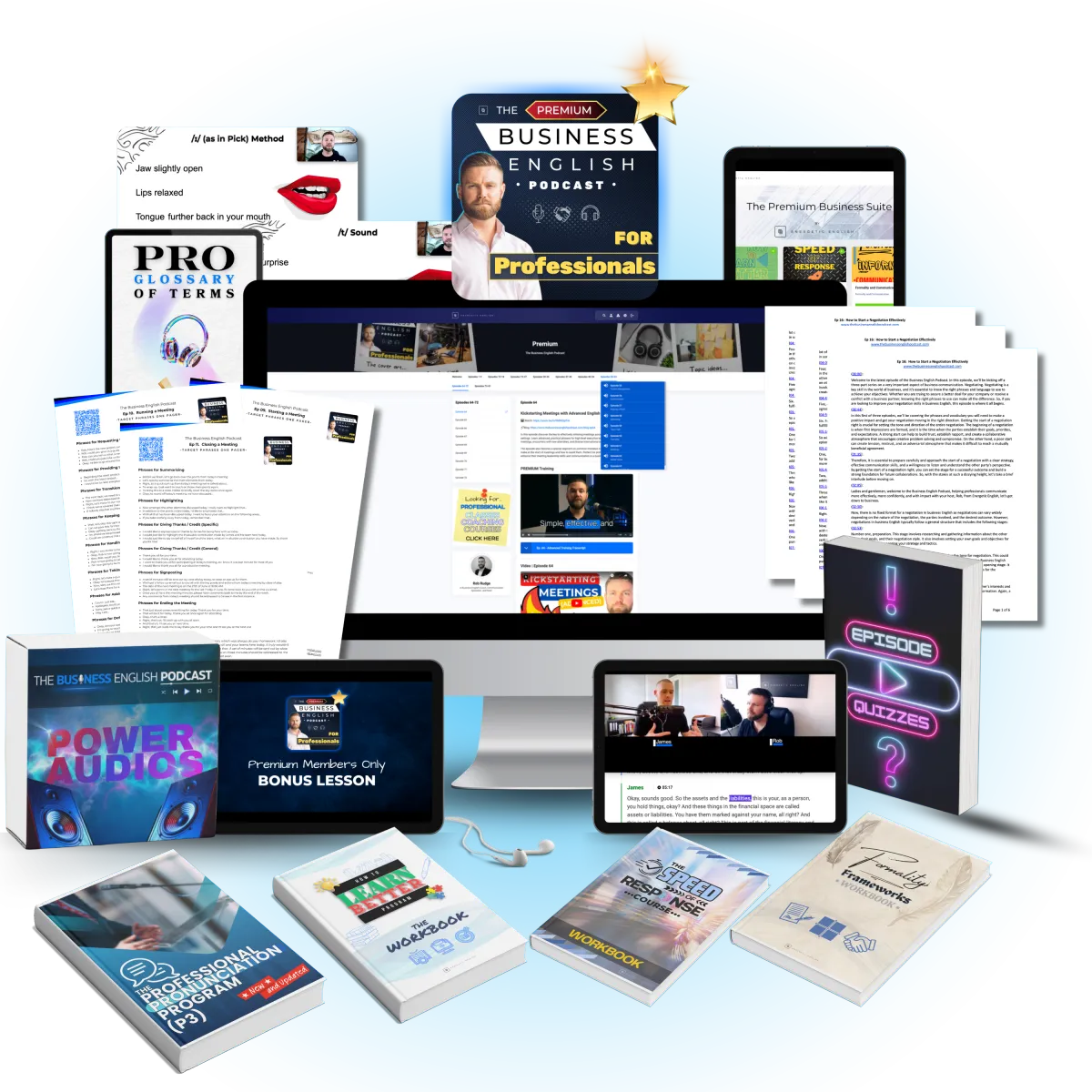The Ugly One: Confidently Communicating The Third Conditional In Business English
4 Jan 25
Mastering the “Ugly” One: How the Third Conditional Transforms Your Business English
In the world of international business, you’re often expected to do more than just get the work done—you need to communicate the story behind it.
Reflecting on what could have been done differently in past projects, negotiations, or decisions is a critical skill. That’s where the elusive “third conditional” comes into play.
This complex grammatical structure is what some call “the ugly one”—but as you’ll discover, it’s also a powerful tool for demonstrating strategic thinking, foresight, and professional credibility.
Below, we’ll explore what makes the third conditional so essential, share a few sample phrases, and show you how going deeper into this skill can raise the bar on your Business English.
If this post piques your interest, you won’t want to miss the full episode of The Business English Podcast, where we break down the techniques in detail.
And if you’re ready to go even further, there’s an exclusive premium segment waiting for those who want to truly stand out with advanced language mastery.
Why Does the Third Conditional Matter?
In any forward-moving organization, there comes a time to look backward. It might be when dissecting a failed client pitch, analyzing a missed deadline, or reflecting on a lost partnership.
That’s when the third conditional steps in. It allows you to say more than just “we should have done better.” It lets you pinpoint the cause and effect:
“If we had assigned more resources early on, we would have met the deadline.”
This isn’t just about grammar—it’s about demonstrating insight.
By clearly connecting hypothetical past actions to alternate outcomes, you communicate that you understand what went wrong, how it went wrong, and what might prevent it next time.
It’s a linguistic way of painting a picture: Here’s what happened… and here’s what could have happened, if only we’d done something differently.
Bridging the Gap Between Knowing and Doing
Sure, you may know the basic structure:
If + had + past participle … would have + past participle.
But knowing it in theory and deploying it naturally in a high-pressure meeting are two different things.
Without practice, it’s easy to trip over words or revert to simpler forms that don’t capture the nuance you need.
In the podcast episode, you’ll hear phrases like:
“If we had prepared a tailored proposal, we would have won the contract.”
It’s a neat, self-contained lesson.
But the real challenge is making this structure second nature.
You want to be that colleague who, when reflecting on last quarter’s performance, speaks confidently and effortlessly:
“If we had recognized the client’s preferences sooner, we would have adjusted our pitch accordingly.”
This isn’t about impressing others with fancy grammar.
It’s about ensuring that when you reflect on past actions, your words carry weight, clarity, and purpose.
Moving Beyond the Basics
Mastering the default pattern is a start, but there’s a whole range of subtle variations that can add professionalism and polish.
The premium segment of The Business English Podcast digs into these finer points.
We’re talking about nuances like using “could have” or “might have” instead of “would have” to express possibility rather than certainty.
Or inverting the sentence—“Had we recognized…”—to create a more refined, formal tone.
These flourishes separate those who “manage in English” from those who “excel in English.” Such subtlety doesn’t just impress—it clarifies, refines, and enhances your professional image.
This is particularly important if you’re dealing with stakeholders who expect a certain level of linguistic sophistication.
Avoiding Common Pitfalls
Ever found yourself saying “If we would have…”?
That’s a red flag to seasoned ears.
The correct form is always “If we had…” before using “would have” in the result clause.
This isn’t about being a grammar nerd; it’s about making sure your message lands without distracting errors.
The podcast episode outlines the key pitfalls to avoid, turning what might feel like a complicated structure into a predictable, reliable tool.
And once you’ve mastered the fundamentals, the premium content is your playground for experimenting with more intricate forms and scenarios.
The Strategic Edge You Didn’t Know You Needed
As you climb the corporate ladder or negotiate in multinational environments, you’ll quickly realize it’s not just about what you say, but how you say it.
Projecting clarity, authority, and a learning mindset can shift perceptions and influence outcomes.
When you use the third conditional expertly, you’re not merely restating events—you’re demonstrating critical thinking and leadership potential.
This is why we dedicate an entire episode to the third conditional on The Business English Podcast.
We want to help you bridge the gap between intermediate and advanced, between sounding “okay” and sounding “impressive.”
If you’ve been comfortable with basic business English and are looking for that next step, this is it.
Close the Gap, Elevate Your Business English
Your time is valuable. Make every meeting, every presentation, and every client call count by communicating your reflections with impact and precision.
Understanding and using the third conditional isn’t just about grammar—it’s about strategic, future-focused leadership.
Check out the full episode of The Business English Podcast for a comprehensive guide.
And if you’re ready to really set yourself apart, consider the premium tier.
You’ll explore the third conditional on a deeper level, equipping yourself with advanced skills that spark credibility and trust.
Because once you transform “If we had done this…” from a stumbling block into a confident statement of insight, you’ll never look back.
Want More From The Show?
TRANSCRIPTS, PRONUNCIATION SUPPORT, ONE-PAGE PDFs, QUIZZES...?

© Copyrights by The Business English Podcast. All Rights Reserved. | Terms & Conditions | Privacy Policy
